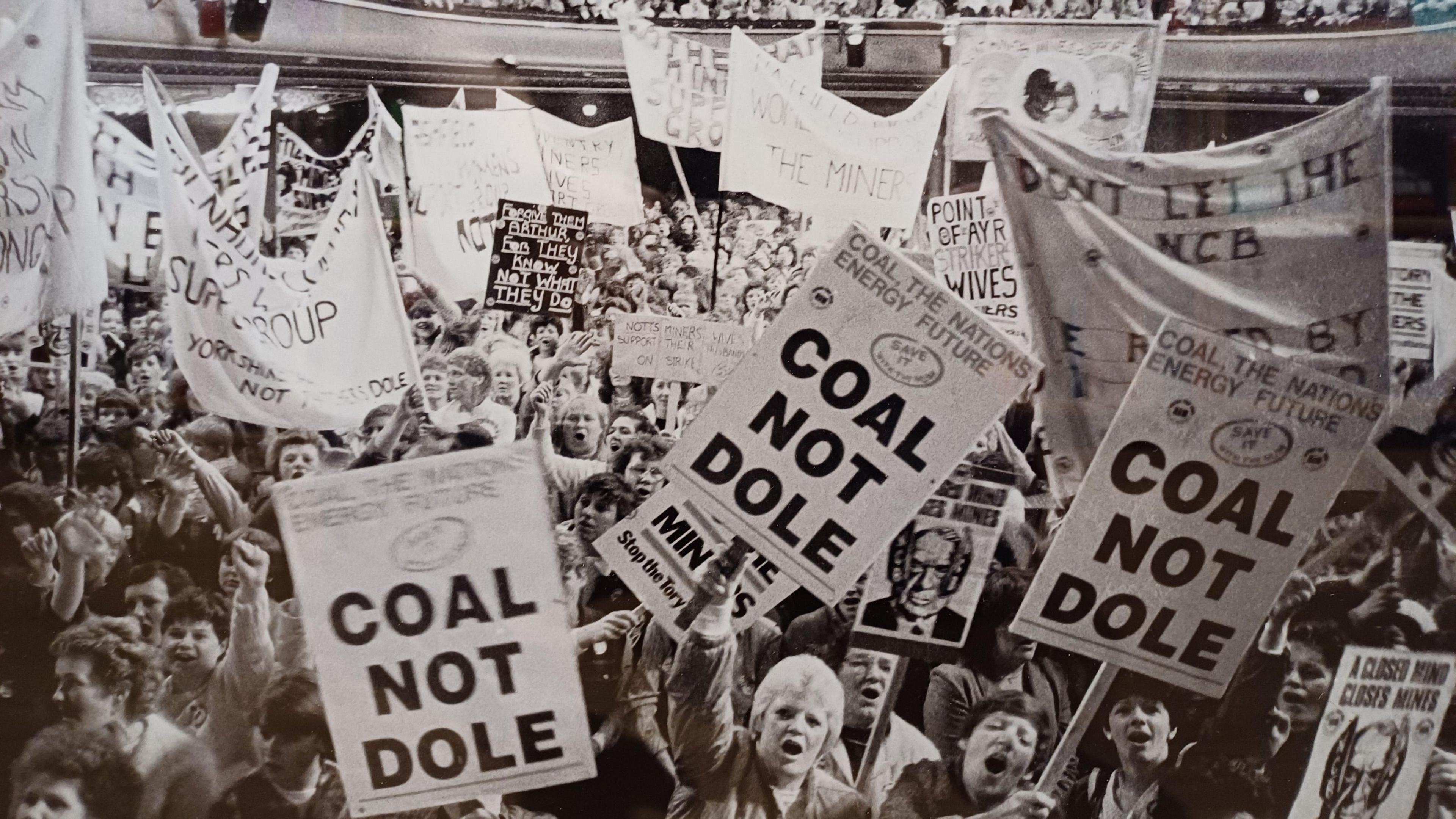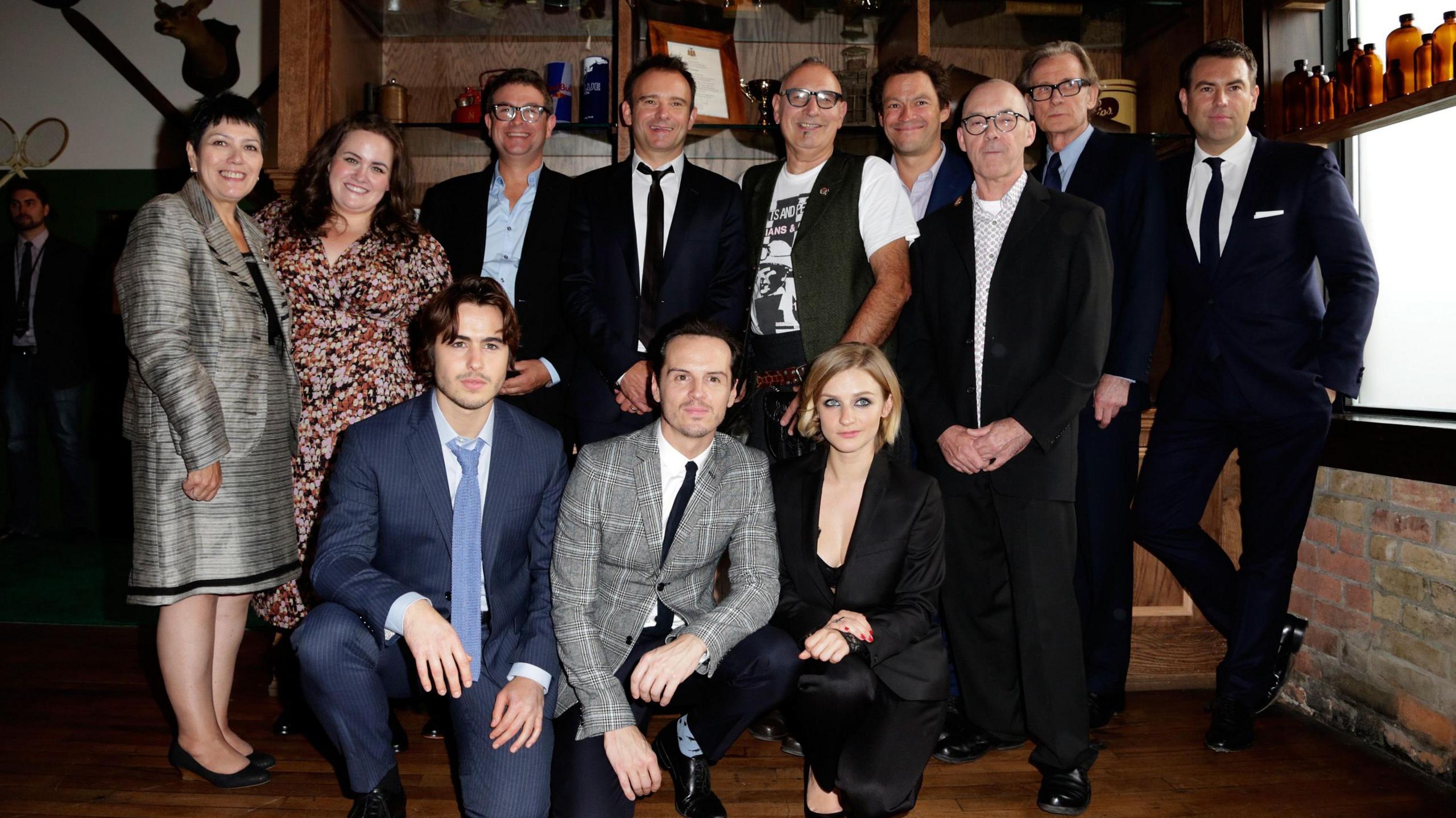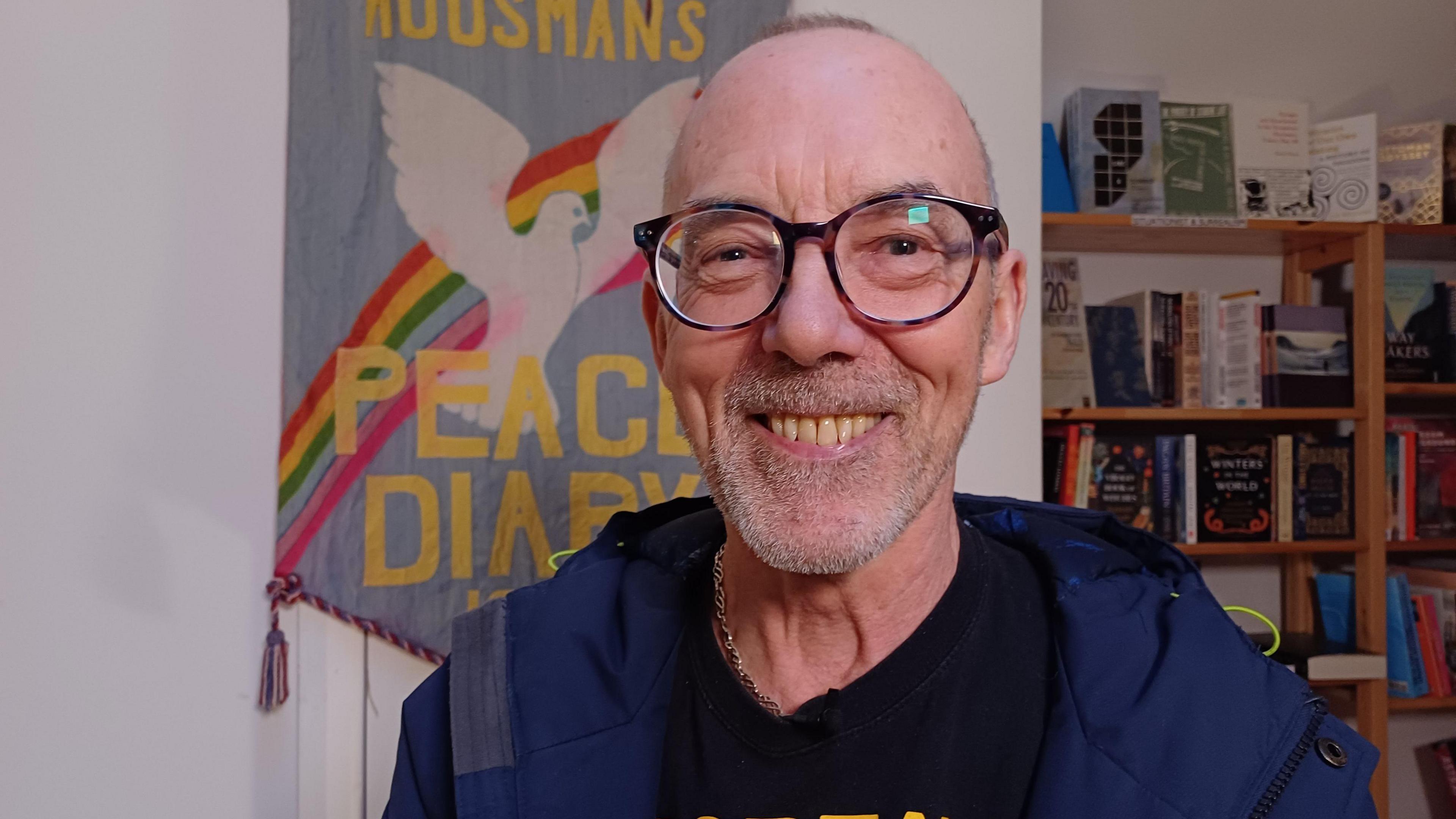How supporting miners led to same-sex marriage

This year marks four decades since the height of the miners' strikes
- Published
It was an unlikely friendship forged out of adversity and solidarity in the face of prejudice.
But 40 years on, the real-life stars of the film Pride say "their little corner of south Wales" changed the face of the UK forever.
At the height of the miners’ strike in 1984, a group of miners and their supporters from the Dulais Valley were supported by campaigners from London – Lesbians and Gays Support the Miners (LGSM).
The friendship endured and, they say, led to significant changes in gay rights law.
How the miners changed LGBTQ+ history
Some of the surviving members from both groups met at Housmans book shop in King’s Cross, London, home of the Lesbian and Gay Switchboard helpline featured in the film.
They include Sian James, who said she had the "honour" of serving in Westminster when the legislation was passed.

Sian James served as an MP for a decade
She was one of the driving forces of the Dulais valley group which helped striking miners and their families who were struggling to make ends meet.
She became MP for Swansea East in 2005 and served until 2015, during which time significant changes to gay rights laws were brought in by the UK government, including legislation in 2013 to legalise same sex marriages, which became law the following year.
"We did change things in our little corner of south Wales, by our role in changing public perception and public opinion," she said.
"We helped change the discussion through the National Union of Mineworkers and other trades unions and government policy.
"I had the honour of serving in Westminster when we voted on that particular policy."
But she warned: "It is never over. You have to keep fighting."
Enduring friendship of miners and gay activists
- Published1 October 2022
Miners' strike film inspirations honoured
- Published4 May 2019
Pride people tell their story
- Published10 January 2015
The roots to those significant changes go a long way back.
LGSM supported the miners in their time of need and the miners returned the compliment, joining the Pride march in London in 1985, significant steps on changing attitudes within politics.
But change in the law aside, for another of the group the shared experiences of 1984 and 1985 were personally life-changing.
Jane Francis-Headon was a teenager at the time of the strike, but had a close personal connection with what was going on through her mother.
Her eyes were opened to a world she did not know existed – including a visit to a London nightclub where she met Jimmy Somerville - but to which she realised she belonged.
"Mum told us that LGSM were going to come and my eyes lit up. It was boring at that time – no money, no clothes. But this was exciting," she said. "It opened my world."
Jane now has a wife, but after joining the Army soon after the strike, had to hide her sexuality for years.
She said that her experiences back then are directly linked to where she is now and that "the legacy for me is massive."
The release of the film Pride - which was nominated for a Golden Globe - was a less serious, but equally life-changing moment.
"I never stopped telling the story about the LGSM, but nobody believed me," she said.

The film Pride depicts how a group of lesbian and gay activists supported the miners
"But I never let up. And when the film came out I was like 'there you go, see'. I was telling the truth the whole time."
And speaking of truth, what really happened in that moment of epic culture clash when LSGM visited the village of Onllwyn for first time?

Mike Jackson became emotional as he recalled applause from the miners
In the film, stunned silence was followed by a warm reception and Dominic West performing an unparalleled dance routine around the miners' institute.
In real life, there was a bit of both.
Mike Jackson from LGSM wells up as he recalled what happened.
"When we walked into that welfare hall there were 27 of us. We were very conspicuous.
"These queers walked in and the whole tenor of the conversation dropped and for a split second I was a bit worried.
"But someone started clapping and within seconds the whole hall stood up and started giving us an ovation.
"That has to be the most amazing moment ever in my life... no way did we expect that."
And what about the dance? Did that really happen?
Spoiler alert: It did not, but was inspired by a photograph of Jonathan Blake taken at the time.
“We were extraordinarily nervous about who we were going to meet,” he said.
“We walked in and there was a moment of silence... your heart sinks. What have we done?
"But then one person starts clapping.
"And there is a wonderful photo of me clapping my hands with glee. And from that came the dance. So no, I did not jump on the table.”
I ask him with a smile if we wished he had. He pauses.
And, as emphatically as they embraced each other across the 1980s cultural divide, replies with a smile: "No."
Related topics
- Published4 May 2024

- Published10 January 2015
- Published13 September 2014